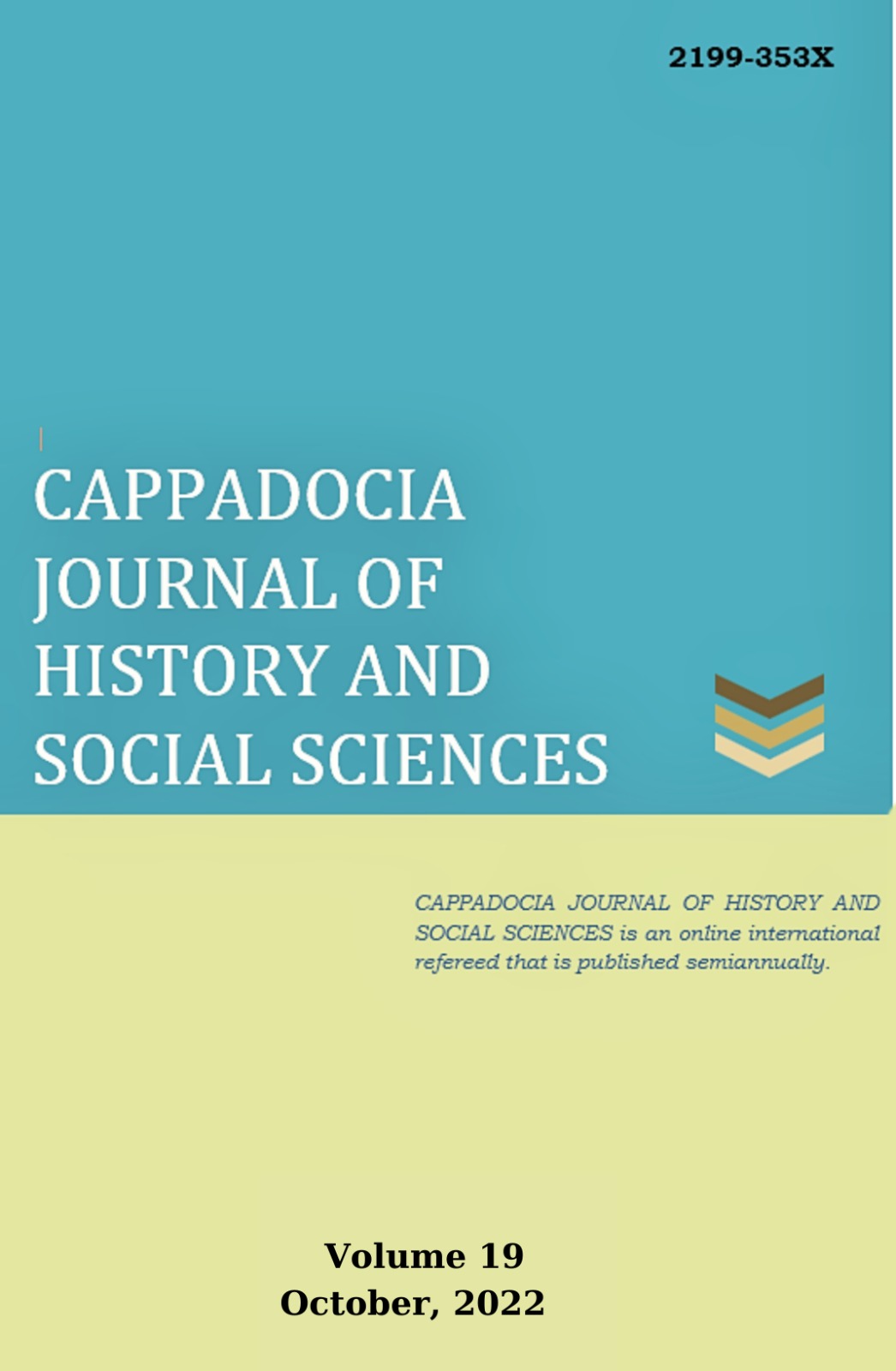Author :
Abstract
Osmanlı Devleti’nde yolların bakım, onarım ve güvenliği ile meşgul olan geri hizmet gruplarından biri de derbentçilerdir. Derbent teşkilatları ana yolların kesiştiği, ıssız ve korunmaya muhtaç yerlerde kurulmuştu. Bu yüzden, yakın köylerde yaşayanlar bu derbentlere sağladıkları hizmetlerden dolayı bazen bir kısım bazen de tüm vergilerden muaf tutulmuşlardır. Derbentler sadece bölgenin ve ticaret yollarının güvenliğini sağlamak konusunda önemli noktalar olmakla kalmamış aynı bölgelerde yerleşim yerlerinin oluşmasını da sağlamıştır. 18. yüzyıldan sonra derbent teşkilatındaki bozulmalardan dolayı taşrada güvenliği sağlamak için zaptiye ve jandarma teşkilatları kurularak derbentlerin yaptığı işi icra etme yolunda yeni adımlar atılmıştır.
Bu makalede, Osmanlı derbent teşkilatının sahadaki somut örnekleri üzerinden anlaşılabilmesi için Tokat Zile’deki üç köyün derbent niteliği taşıyıp taşımadığı incelenmiştir. İncelemede hem tarihsel veriler işe koşulmuş hem de köylerin konumlandığı yerlerin coğrafi doğal yapısı ve topografyası değerlendirilmiştir. Elde edilen bilgiler ışığında Eskiderbent, Yeniderbent ve Belpınar köylerinin derbent niteliği taşıyıp taşımadığı, Osmanlı döneminde derbent teşkilatına dahil olup olmadıkları tespit edilmeye çalışılmıştır.
Keywords
Abstract
Derbent officers are one of the back service groups that are busy with the maintenance, repair and safety of the roads in the Ottoman Empire. Derbent organizations were established in desolate and needy places where main roads intersect. Therefore, those living in nearby villages were exempted from some taxes and sometimes all taxes due to the services they provided to these derbents. Derbents were not only important points in ensuring the security of the region and trade routes, but also provided the formation of new settlements in the same regions. After the 18th century, due to the deterioration in the derbent organization, new steps were taken to carry out the work of the derbent by establishing the police and gendarmerie organizations to ensure security in the provinces.
In this article, it has been examined whether the three villages in Tokat Zile have the characteristics of derbent in order to understand the Ottoman derbent organization through concrete examples in the field. In the study, both historical data were used and the geographical natural structure and topography of the places where the villages were located were evaluated. In the light of the information obtained, it has been tried to determine whether Eskiderbent, Yeniderbent and Belpınar villages have derbent characteristics and whether they were included in the derbent organization in the Ottoman period.
Keywords
- ALTIN, Hakan, ‘‘XIX. Yüzyılda Osmanlı Devleti’ne Yapılan Çerkes Göçleri (Çerkes Sürgünü)’’, Belgi Dergisi, C. 2, S. 14, Yaz 2017, s. 580-591.
- ALTUĞ, Uğur, “Erken 15. Yüzyılda Balkanlarda Osmanlı Hâkimiyetinin Yerleşmesinde Derbentlerin Rolü”, Rumeli-Balkanlar Özel Sayısı-1, Sayı 66, Yeni Türkiye Yayınları, Ankara 2015, s.614-618.
- AVCI AKÇALI, Aslı, ASLAN, Erdal, “Tarih Öğretiminin İyileştirilmesi Yolunda Alternatif Bir Yöntem: Sözlü Tarih”, Kastamonu Eğitim Dergisi, C. 20, S. 2, Mayıs 2012, s. 669-688.
- BAYARTAN, Mehmet, ‘‘Osmanlı Şehirlerinde Vakıflar ve Vakıf Sisteminin Şehre Kattığı Değerler’’, Osmanlı Bilimi Araştırmaları Dergisi, C. 10, S. 1, 2008, s. 157-175.
- BELEN, Gülay, Eyalet-i Rum’da Zaviyeler (15-16. Yüzyıllar), Ordu Üniversitesi Sosyal Bilimler Enstitüsü Tarih Anabilim Dalı, Doktora Tezi, 2022.
- DEMİR, Alpaslan, Osmanlı’da Göç ve Göçmenler, Kitabevi Yayınları, İstanbul 2021.
- DEMİR, Selçuk, ‘‘Derbent Sisteminin Nüfus ve Yerleşme Üzerine Etkisi: Gabrova Karyesi Örneği’’, Social Sciences Studies Journal, C. 4, S. 20, 2018, s. 2732- 2738.
- DEVELLİOĞLU, Ferit, Osmanlıca-Türkçe Ansiklopedik Lügat, Aydın Kitabevi Yayınları, Ankara 2015.
- ERSOY, Ersan, ‘‘Türklerde Bir İskân Siyaseti Olarak Derbent Teşkilatı’’, Doğu Anadolu Bölgesi Araştırmaları Dergisi, 2008, s. 47-54.
- ERYAVUZ, Şebnem “Kervansaray”, TDV İslâm Ansiklopedisi, C. 25, Türkiye Diyanet Vakfı İslâm Araştırmaları Merkezi Yayınları, 2002, s. 299-302.
- ESKİKURT, Adnan, GARİPAĞAOĞLU, Nuriye, “İç-Doğu Anadolu Bölgeleri Geçişinde Derbent Yerleşmelerine Bir Örnek: Alacahan Derbendi”, Türk Dünyası Araştırmaları Dergisi, 2008, s. 185-210.
- GARİPAĞAOĞLU, Nuriye, ‘‘Derbent Yerleşmelerinin Yer Seçimi Üzerine Bir Sınıflandırma’’, Öneri Dergisi, C. 2, S. 12, Haziran 1999, s. 67-69.
- GÖKBUNAR, Ali R. ‘‘Celali Ayaklanmalarının Maliye Tarihi Açısından Değerlendirilmesi’’, Yönetim ve Ekonomi Dergisi, C. 14, S. 1, 2007, s. 1-24.
- GÜMÜŞÇÜ, Osman, Türk İskan Sistemi veya Uc-Fetih-İskan Döngüsü (XI-XVI. Yüzyıl), Yeditepe Yayınları, İstanbul 2019.
- GÜMÜŞÇÜ, Osman, A. DEMİR, E. E. ÖZÜNLÜ, Türkiye’nin Kayıp Köyleri, Yeditepe Yayınları, İstanbul 2020.
- HALAÇOĞLU, Yusuf, ‘‘Derbent’’, Türkiye Diyanet Vakfı İslâm Ansiklopedisi, C. 9, Türkiye Diyanet Vakfı İslâm Araştırmaları Merkezi Yayınları, 1994, s. 162-164.
- HALAÇOĞLU, Yusuf, XVIII. Yüzyılda Osmanlı İmparatorluğu’nun İskân Siyaseti ve Aşiretlerin Yerleştirilmesi, Türk Tarih Kurumu Basımevi, Ankara 1991.
- HANİLÇE, Murat, ‘‘Vatan Topraklarındaki İmza: Türk Yer Adları, Zile Kazası Örneği (1455- 1575)’’, Turkish Studies, International Periodical For the Languages, Literature and History of Turkish or Turkic, C. 8/2, Kış 2013, s. 89-135.
- HANİLÇE, Murat, 16 Numaralı Tokat Şer‘iye Sicili’nin Transkripsiyonlu Metni ve Değerlendirilmesi, Gaziosmanpaşa Üniversitesi Sosyal Bilimler Enstitüsü Yüksek Lisans Tezi, Tokat 2009.
- HANİLÇE, Murat, XV ve XVI. Yüzyılda Zile Kazası (1455-1574), Gaziosmanpaşa Üniversitesi Sosyal Bilimler Enstitüsü Tarih Anabilim Dalı Doktora Tezi, Tokat 2014.
- İNALCIK, Halil, Osmanlı İmparatorluğu’nun Ekonomik ve Sosyal Tarihi Cilt I: 1300-1600, Ed. Halil İnalcık, Donald Quataert, Çev: Halil Berktay, Eren Yayıncılık, İstanbul 2000.
- KEÇİCİ, Ayşe Değerli, ‘‘Osmanlı Devleti’nde bir Taşra Güvenlik Örgütü Olan Derbent Teşkilâtı’’, Gaziantep Üniversitesi Sosyal Bilimler Dergisi, C. 7, S. 1, 2008, s. 44-53.
- ORHONLU, Cengiz, Osmanlı İmparatorluğu’nda Derbend Teşkilâtı, Eren Yayınları, İstanbul 1990.
- ÖZCAN, Almıla Gökçe, ‘‘XVI. Yüzyılın İkinci Yarısında Osmanlı Devleti’nde Vergi Muâfiyeti: Derbendçilik’’, Gazi Akademik Bakış Dergisi, C. 11, S. 22, Yaz 2018, s. 305-322.
- POWDERMAKER, Hortense, “Saha Çalışması”, Journal of Economy Culture and Society, çev: Beylü Dikeçligil, S. 24, 2011, s. 35-43.
- SÖNMEZ, Ali ‘‘Zaptiye Teşkilatı'nın Düzenlenmesi (1840- 1869)’’, Tarih Araştırmaları Dergisi, C. 25, S. 39, Mayıs 2006, s. 199-219.
- ULUÇAY, M. Çağatay, 18. ve 19. Yüzyıllarda Saruhan’da Eşkiyalık ve Halk Hareketleri, Berksoy Basımevi, İstanbul 1955.
- UZUNÇARŞILI, İsmail Hakkı, Osmanlı Tarihi c. I, Türk Tarih Kurumu, Ankara 1994.
- Belpınar Köyü Muhtarı, Serdar Çakmak, 1970 doğumlu.
- Eskiderbent Köyü Muhtarı, İsmail Akcan, 1961 doğumlu.
- Yeniderbent Köyü Muhtarı, Satılmış Üney, 1964 doğumlu.
- Yeniderbent Köyü Sakini, Sadık Üney, 1961 doğumlu.
- https://www.turkcebilgi.com/yeniderbent,_zile, (20.01.2022), (02:36).
- https://www.koylerim.com/zile-belpinar-koyu-324228h.htm, (20.01.2022) (23:10).
- https://tr.wikipedia.org/wiki/Eskiderbent,_Zile (17.01.2022) (14:56).
- https://kelimeler.gen.tr/egrek-nedir-ne-demek-104663, (19.01.2022), (03:30).
- http://www.lugatim.com/s/e%C4%9Frek, (19.01.2022), (03:28).
- https://tr.wikipedia.org/wiki/Yeniderbent,_Zile, (20.01.2022), (02:00).
- https://www.koylerim.com/zile-eskiderbent-koyu-324312h.htm, (17.01.2022) (00:59).





